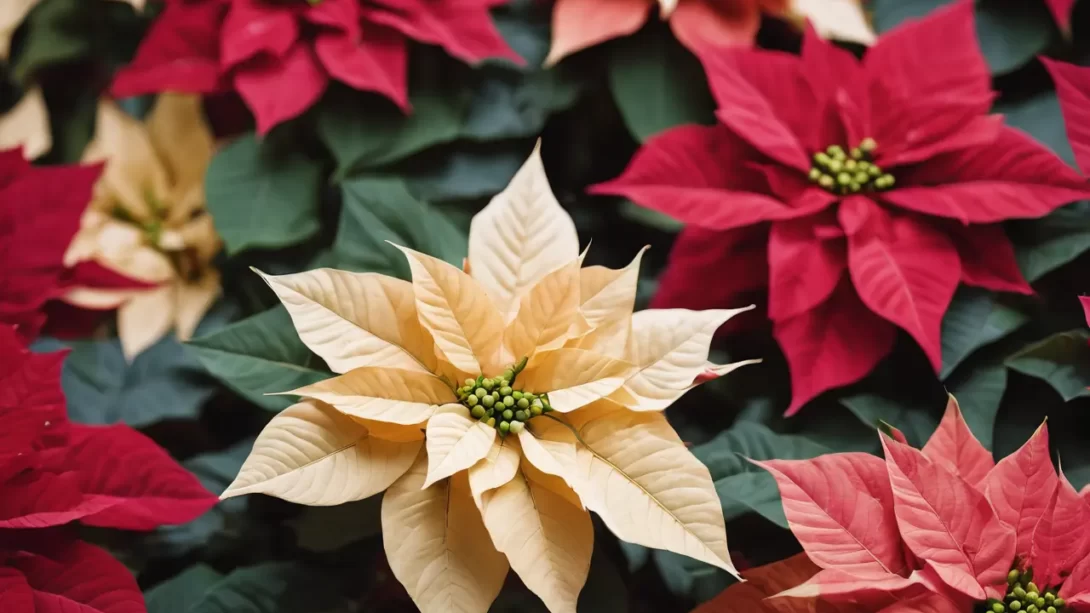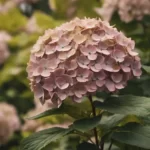Poinsettias, with their vibrant red leaves, are a quintessential symbol of the holiday season. These plants bring festive cheer to homes and public spaces alike during winter months. A common question among gardeners and holiday decorators alike is whether poinsettias are annuals or perennials. Understanding the nature of these popular plants can help in making the most of their beauty and potentially extending their display beyond the holiday season.
Poinsettias
Poinsettias, scientifically known as Euphorbia pulcherrima, are native to Mexico and Central America. They are particularly noted for their brightly colored bracts, which are often mistaken for flowers. The actual flowers are the small, yellow buds at the center of the bracts. Poinsettias have become synonymous with Christmas due to their red and green foliage and their blooming season, which coincides with the winter holidays. This association dates back to 16th-century Mexico, with legends linking the plant to the Christmas story.
Defining Annuals and Perennials
To determine whether poinsettias are annuals or perennials, it’s important to understand these classifications. Annual plants are those that complete their life cycle in one growing season, ending in seed production. Perennials, on the other hand, live for more than two years, typically going dormant in the off-season and returning to growth in the next. These classifications can vary based on climate conditions and how a plant is cared for in a specific environment.
Poinsettias: Annual or Perennial?
Poinsettias are, in fact, perennials. In their native habitat of Mexico and Central America, they can grow as shrubs or small trees, often reaching heights of up to ten feet. This perennial nature means that with proper care, poinsettias can survive and bloom for several years. However, in colder climates or when not provided with adequate care, they may be treated as annuals, being discarded after the holiday season. The perception of poinsettias as annuals is primarily due to their seasonal association and the challenge of re-blooming in a typical home environment.
Growing Poinsettias Year-Round
For those interested in keeping their poinsettias beyond a single season, understanding the right care is essential. After the holiday season, when the bracts start to fade, reducing water and allowing the plant to enter a period of dormancy is advisable. In spring, pruning and resuming regular watering encourages new growth. Poinsettias require specific light conditions to bloom again, with a period of about 14 hours of darkness each day for 8-10 weeks before the desired bloom time. This process, known as photoperiodism, is crucial for the re-blooming of poinsettias.
Poinsettias in Different Climates
The behavior of poinsettias as annuals or perennials is greatly influenced by the climate. In their native warm climate, they grow outdoors as perennials. However, in colder climates, without the conditions mimicking their natural habitat, maintaining them as perennials indoors can be challenging. For those in temperate regions wanting to keep poinsettias year-round, growing them in pots indoors with controlled temperature and light conditions is necessary to encourage annual blooming.
Care Tips for Poinsettias
Whether you’re growing poinsettias as annuals or aiming to maintain them as perennials, proper care is key. Here are some best practices:
- Light: Poinsettias require bright, indirect sunlight. Too much direct sunlight can damage the leaves, while too little light can weaken the plant.
- Water: Keep the soil consistently moist but not waterlogged. Overwatering can lead to root rot, and under-watering can cause the leaves to droop and fall off.
- Temperature: Poinsettias prefer temperatures between 65 and 70 degrees Fahrenheit. Avoid placing them in areas with cold drafts or excessive heat.
- Fertilization: After the blooming season, fertilize poinsettias regularly to encourage growth. However, stop fertilizing when you begin the dark treatment for re-blooming.
- Pruning: Prune poinsettias in late winter or early spring to keep them bushy and compact. This also helps the plant focus its energy on new growth.
Conclusion
Poinsettias, while commonly treated as disposable annuals during the holiday season, are actually perennials capable of living and blooming for several years with proper care. Their ability to re-bloom is contingent on specific light and temperature conditions, which can be a fun challenge for dedicated gardeners. By understanding and meeting their care requirements, you can enjoy the beauty of poinsettias beyond the festive season. Whether you choose to grow them as annuals for their holiday charm or as perennials for a lasting addition to your plant collection, poinsettias are a delightful and vibrant choice.



